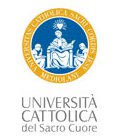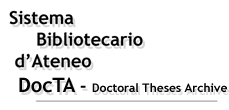|
|
DocTA - Doctoral Theses Archive >
Tesi di dottorato >
CORSO DI DOTTORATO IN SCIENCE >
Citazione:
Utilizza queste indicazioni per citare o creare un link a questo documento.
|
Ciambriello, Luca. "SUPERSONIC CLUSTER BEAM DEPOSITION OF NANOALLOYS AND BIMETALLIC NANOSTRUCTURES FOR ENHANCED OXYGEN EVOLUTION REACTION", Università Cattolica del Sacro Cuore, XXXV ciclo, a.a. 2022/23, Brescia, [http://hdl.handle.net/10280/180894].
|
| Titolo: | SUPERSONIC CLUSTER BEAM DEPOSITION OF NANOALLOYS AND BIMETALLIC NANOSTRUCTURES FOR ENHANCED OXYGEN EVOLUTION REACTION |
| Autore/i: | CIAMBRIELLO, LUCA |
| Tutor: | GAVIOLI, LUCA
NERETINA, SVETLANA
ALESSANDRI, IVANO
PTASINSKA, SYLWIA |
| Coordinatore: | KAMAT, PRASHANT V. |
| Lingua: | ENG |
| Abstract in italiano della tesi: | Per far sì che l’idrogeno, sintetizzato per via elettrochimica, rappresenti la migliore alternativa ai combustibili fossili, è necessario superare la lenta cinetica della reazione di evoluzione di ossigeno (OER) nella cella elettrochimica. La diffusione su larga scala di catalizzatori OER all’avanguardia, basati su nano-leghe, richiede la risoluzione di due principali questioni aperte: 1) l’ottimizzazione della loro morfologia, 2) il raggiungimento di una stabilità catalitica in condizioni operative industriali prolungate. Entrambi questi punti sono oggetto di studio di questa tesi, in cui elettrodi innovativi a base di nano-leghe di NiFe con morfologia controllabile vengono sintetizzati attraverso la tecnica “Supersonic Cluster Beam Deposition” e applicati come catalizzatori della OER in condizioni operative prolungate. Gli elettrodi vengono caratterizzati dal punto di vista chimico, fisico ed elettrochimico, mediante l’uso di diverse tecniche di spettroscopia e microscopia. La caratterizzazione elettrochimica è discussa in funzione della morfologia e densità di NiFe nel range 10 𝑛𝑔/𝑐𝑚2 – 30 𝜇𝑔/𝑐𝑚2. I dati sperimentali dimostrano una attività catalitica eccellente, mentre la morfologia dell’elettrodo viene ottimizzata minimizzando la densità di NiFe senza compromettere l’efficienza elettrochimica. Inoltre, una nuova procedura per stabilizzare la risposta catalitica in condizioni operative prolungate viene presentata e correlata alla trasformazione morfologica e chimica dell’elettrodo. Questi risultati rappresentano un passo cruciale verso la sintesi di catalizzatori di OER convenienti ai fini della diffusione industriale su larga scala.
Nella caratterizzazione dei film di NiFe, la spettroscopia ottica svolge un ruolo cruciale. Un nuovo software viene interamente sviluppato e presentato in questa tesi, ideato per l’analisi quantitativa degli spettri ottici nel range UV-VIS-NIR ed applicato anche ad altri sistemi plasmonici a base di Au e Ag. In questo contesto, un metodo di fabbricazione avanzato (nanoimprinting lithography e dynamic templating combinato con liquid/solid interface growth) è impiegato per sintetizzare configurazioni periodiche di strutture cristalline di Au con considerevoli proprietà plasmoniche e ottiche. Lo studio di questi metodi di sintesi, la realizzazione di strutture plasmoniche specifiche e una approfondita caratterizzazione ottica rappresentano un avanzamento in molti settori applicativi, tra cui quello dei sensori e della nanoelettronica. |
| Abstract in inglese: | Making Hydrogen synthesized by electrochemistry the best alternative to fossil fuels requires to overcome the slow kinetic of the oxygen evolution reaction (OER) in the electrochemical cell. The state-of-the-art OER electrocatalysts, based on nanoalloyed materials, face two main challenges still hindering the large-scale development: 1) the optimization of the electrode morphology and 2) the achievement of the catalyst stability under industrial prolonged activity. This PhD dissertation tackles both issues by synthesizing, through Supersonic Cluster Beam Deposition, a novel NiFe nanoalloyed electrode of controllable morphology, applied as OER catalyst under prolonged operational conditions. An in-depth physical, chemical and electrochemical characterization is carried out through several microscopy and spectroscopy techniques. The electrochemical characterization is carried out as a function of the NiFe morphology and mass loading within the 10 𝑛𝑔/𝑐𝑚2 – 30 𝜇𝑔/𝑐𝑚2 range. The data reveal that an excellent OER catalytic activity can be achieved, while the optimization of the NiFe morphology is accomplished by minimizing the NiFe mass loading without affecting the electrochemical efficiency. Conversely a procedure to stabilize the catalytic response in prolonged OER operation is proposed and correlated to chemical and morphological transformation of the electrode. These findings represent a crucial step towards the synthesis of affordable OER electrocatalysts in large-scale industrial applications.
In the physical and chemical characterization of the NiFe films, the optical spectroscopy plays a crucial role. To this aim a new home-made software for the quantitative analysis of the UV-VIS-NIR optical spectra is developed and also applied to other Au and Ag based plasmonic systems. In this framework, an advanced fabrication technique (nanoimprinting lithography and dynamic templating combined with liquid/solid interface growth) is employed to synthesize arrays of Au crystalline structures with an enhanced optical and plasmonic response. The investigation of such synthesis method and the design of specific plasmonic structures, combined with a through optical characterization, represent an advancement in a wide range of applications including sensing and nanoelectronics. |
| Data di discussione: | 8-mar-2024 |
| URI: | http://hdl.handle.net/10280/180894 |
| È visualizzato nelle collezioni: | CORSO DI DOTTORATO IN SCIENCE
|
File in questo documento:
| File |
Dimensioni | Formato | Accessibilità |
|---|
| CiambrielloLuca_Dissertation_Physics.pdf | 12,14 MB | Adobe PDF | consultabile dal:
31/10/2024
|
|
Accesso e utilizzo dei contenuti di DocTA
|



